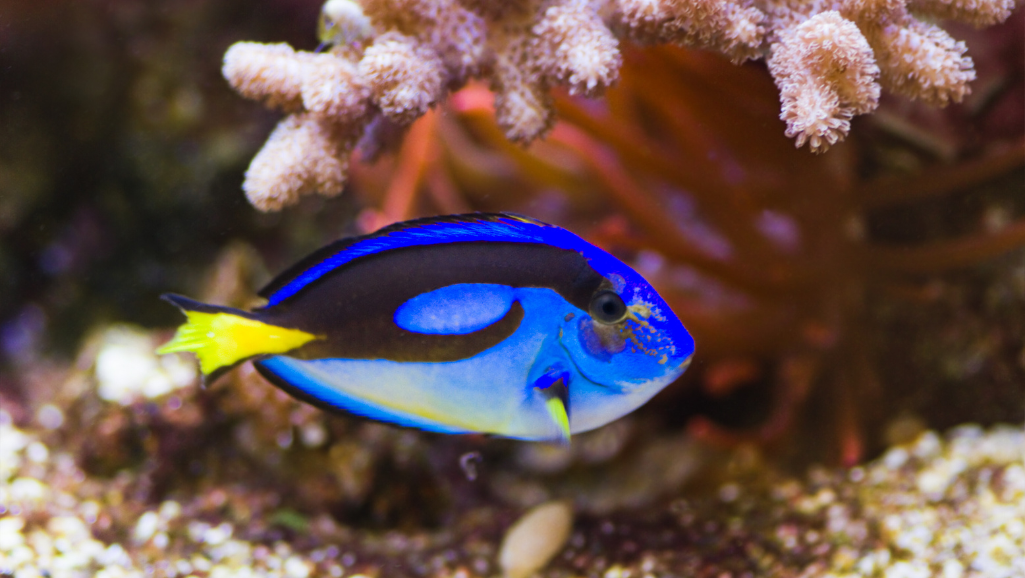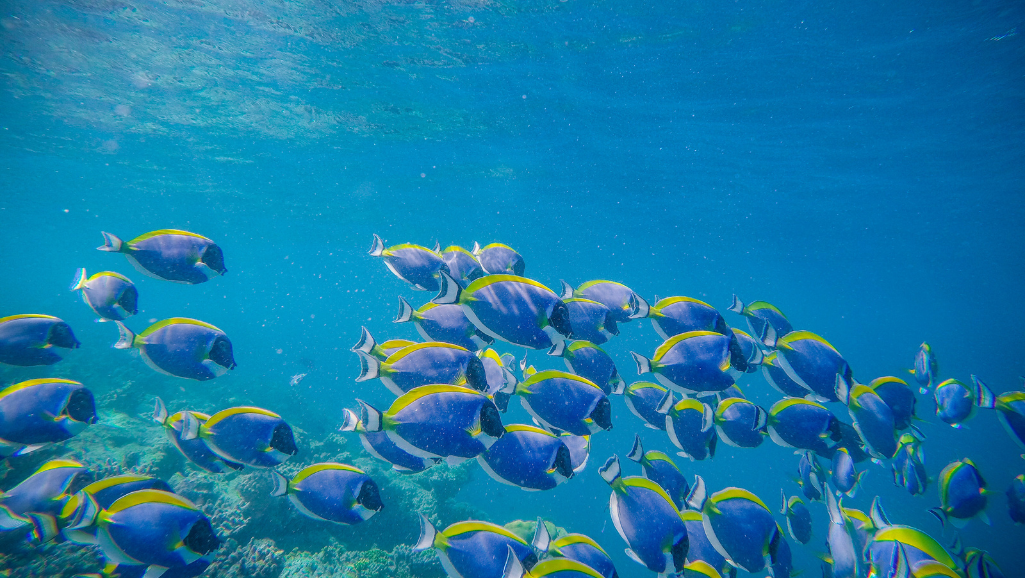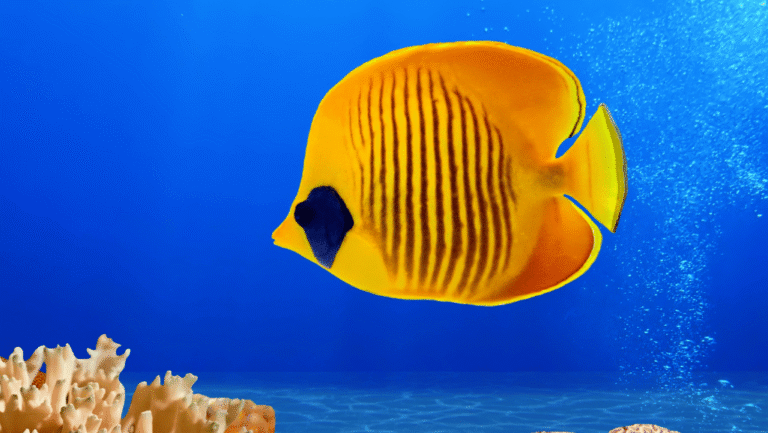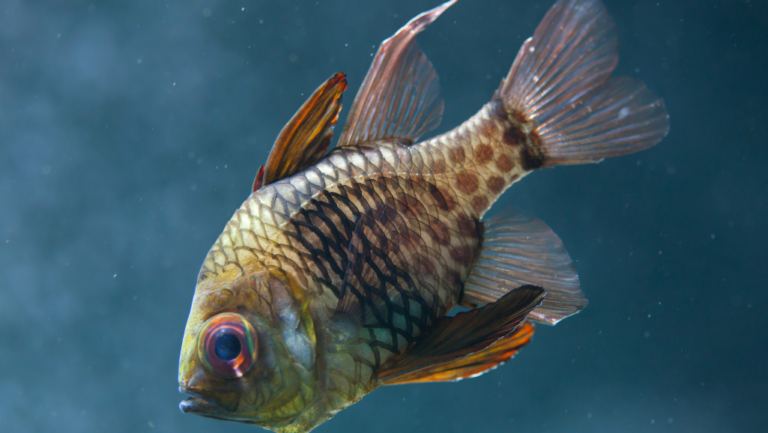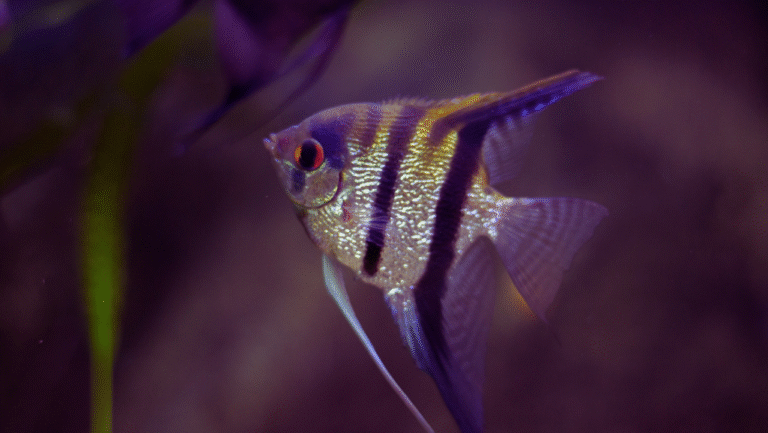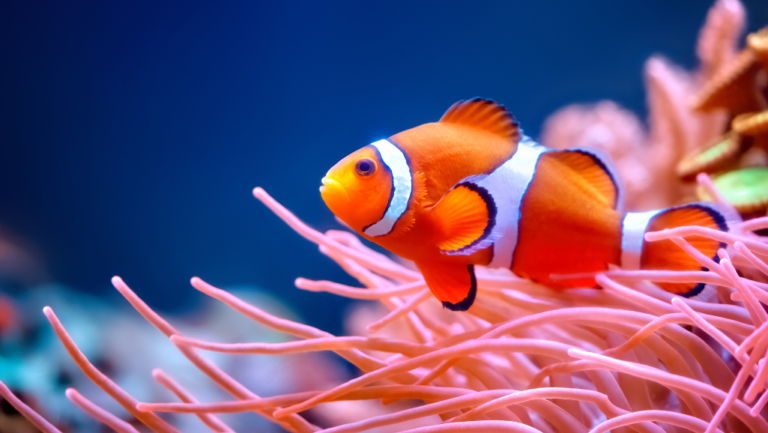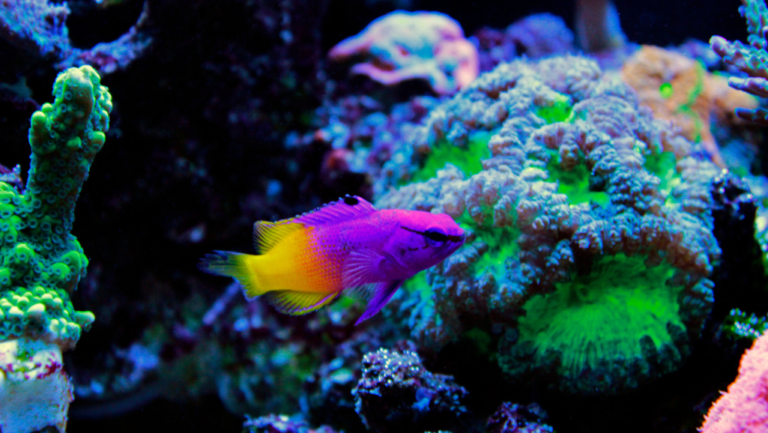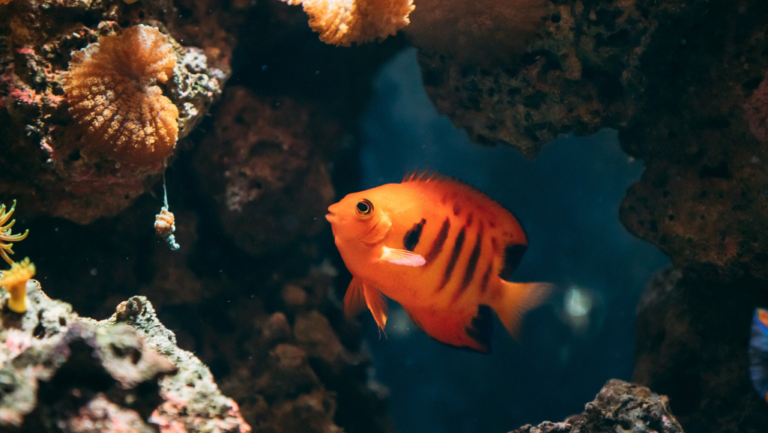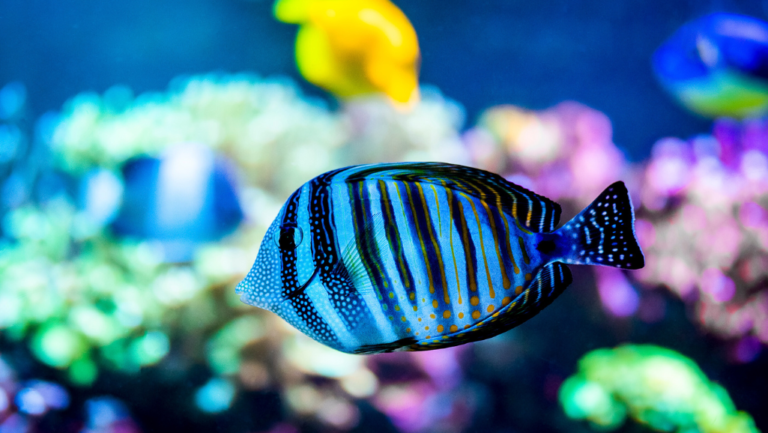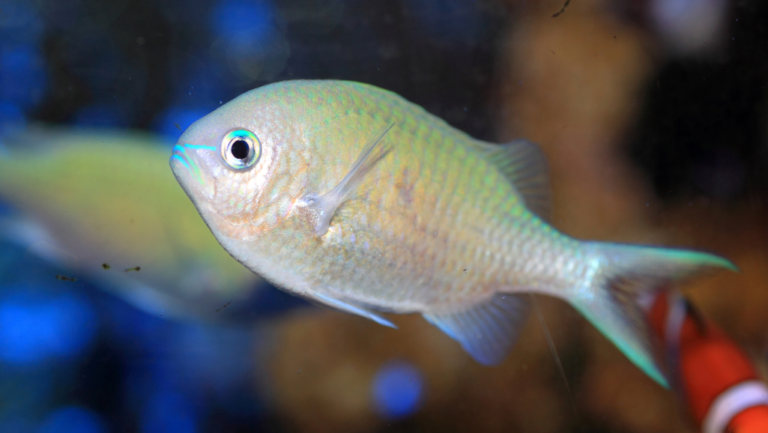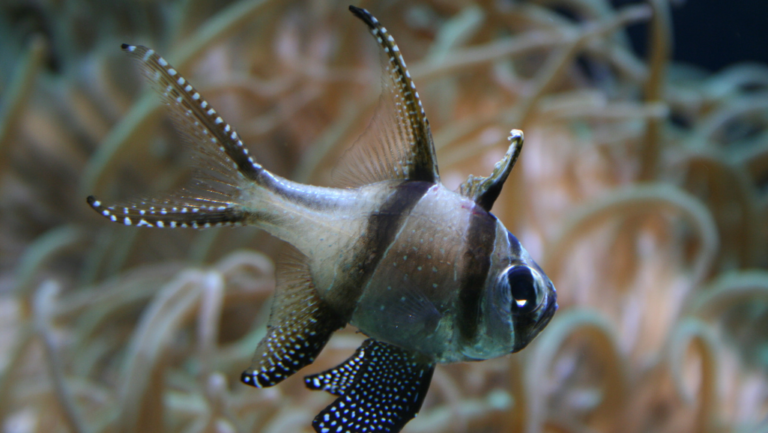The Blue Tang Palette Surgeonfish, a treasure from the Indo-Pacific region, dazzles marine fans globally. Known as Paracanthurus hepatus, this marine fish is more than a pretty face in tropical aquarium species. It shines with its bright blue colors and has spines near its tail for defense.
Admired for its beauty and behavior, it’s a standout in fish species identification. It’s a favorite in home aquariums. Plus, despite its popularity, it’s not considered endangered, thanks to the IUCN’s Least Concern status.
Key Takeaways
- Identification – Recognizing a Blue Tang Palette Surgeonfish requires noting the bright blue body, yellow tail, and distinctive tail spines.
- Tank Requirements – A spacious tank of at least 150 gallons is essential to house these active swimmers comfortably.
- Dietary Needs – Regular grazing on marine algae is key for their diet and health, preventing HLLE.
- Behavioral Traits – They are naturally peaceful, often getting along well with other marine fish in a reef aquarium.
- Health Care Tips – Proactive care, including a period of quarantine and proper diet, helps prevent disease and promotes longevity.
- Conservation Status – Listed as Least Concern, but facing threats from trade, showing the need for sustainable practices.
Overview of the Blue Tang Palette Surgeonfish
The Blue Tang Palette Surgeonfish, also known as the regal blue tang, is a favorite among marine life fans. It’s known for its bright blue colors and graceful swimming. This fish is a key part of coral reefs and is loved by scientists and aquarium owners alike.
Description and Appearance
The regal blue tang has a long, oval body and a pointed snout. Its body is covered in vibrant blue with dark blue stripes. Young ones start yellow and turn blue as they grow.
Their fins have a lighter blue tip, making them stand out in the sea.
Natural Habitat
The Blue Tang Palette Surgeonfish lives in the Indo-Pacific Ocean’s coral reefs. They like strong currents and lots of coral. They can be found from East Africa to Kiribati, in places like southern Japan and the Great Barrier Reef.
These areas are key for keeping their homes safe and healthy.
Lifespan and Size
In the wild, these fish can live over thirty years. But in tanks, they usually live for 12 to 14 years. They can grow up to 10 to 12 inches long, making them easy to spot in the sea and tanks.
Behavior and Social Dynamics
The Blue Tang Palette Surgeonfish is a colorful coral reef inhabitant. It’s known for its bright colors and interesting social and territorial behaviors. These behaviors are key for aquatic hobbyists who want a peaceful tank.
Territoriality
These fish mark their territory, with males showing off their caudal spines. This is more common in small spaces like aquariums. Their territorial behavior is important for survival and breeding in the wild.
Interaction with Other Fish
In the ocean, Blue Tang Palette Surgeonfish are usually peaceful. But in aquariums, things can change. Adding a new fish can lead to fights, mainly with similar or larger fish. Giving them enough space and keeping the tank interesting can help avoid fights.
Signs of Stress
It’s important to watch for stress signs in Blue Tangs. Look for erratic swimming, hiding too much, or acting dead. Keeping the tank calm and stable is key to their health. Watching for these signs helps keep your fish happy and healthy.
Marine life fans aim to create a natural home for fish like the Blue Tang. This means more than just the tank’s setup. It’s about understanding and respecting their natural behaviors. With the right care, your tank can be a thriving underwater world, bringing a piece of the ocean into your home.
Ideal Tank Conditions for Keeping Blue Tangs
To keep Blue Tangs thriving, certain tank conditions are essential. These marine species are sensitive to their environment. So, it’s important to create a home aquarium that closely mimics their natural habitat. Here’s what you need to know.
Water Quality Requirements
For marine fish care, high-quality water is key, and Blue Tangs are no exception. Their tank water should be oxygen-rich and free of phosphates. This is to match the clean, nutrient-poor environments they come from.
Keeping the water temperature between 75°F to 82°F (25°C to 28°C) is vital. The pH levels should be stable, between 8.1 to 8.4. Also, the specific gravity should be between 1.020 to 1.025, and the carbonate hardness (dKH) between 8 to 12°.
Keeping nitrate levels below 10 ppm is important. A quality protein skimmer can also help improve water conditions. This reduces stress and prevents diseases.
Recommended Tank Size
Blue Tangs need plenty of space for their active swimming and growth. They can grow up to 12 inches. So, a tank of at least 100 gallons is recommended, with 200 gallons being ideal.
This size ensures proper swimming and foraging behavior. It also helps maintain stable water parameters, which are critical for their health.
The care of aquatic species like Blue Tangs shows the importance of space. It’s not just for health but also for mimicking their natural movement patterns.
Aquarium Setup Essentials
For Blue Tangs, live rock formations are essential in the aquarium setup. They provide grazing areas for algae and hiding spots. These are important for stress management.
The rocks should be arranged to allow for ample swimming lanes. Blue Tangs need to swim freely and extensively. A wider aquarium is better than a tall one for their natural swimming motion.
Good water circulation is also key. It should mimic the gentle currents of a coral reef. This can be achieved with multiple circulation pumps. It supports their swimming needs and keeps the water quality high.
In conclusion, setting up an ideal tank for Blue Tangs requires careful consideration. This includes water quality, spatial needs, and tank structuring. By meeting these specific requirements, you can create a healthy and dynamic environment for your Blue Tangs. This contributes to their well-being and longevity in captivity.
Feeding and Nutrition
The bright blue colors of the Blue Tang Palette Surgeonfish show how important diet is. As omnivores, they need a mix of zooplankton and algae to stay healthy.
Diet in the Wild vs. Captivity
In the wild, Blue Tangs eat mostly algae. They also eat zooplankton, which is key for their growth. This diet keeps their scales looking vibrant.
In tanks, feeding them a similar diet is key. They need marine algae, seaweed sheets, and sometimes Mysis shrimp. This diet helps keep their colors bright and their health good.
Best Foods for Blue Tang
- Marine algae and prepared algae pellets or flakes
- Nori sheets, doubled as vegetable matter
- Occasional protein supplements like brine shrimp or Mysis shrimp
- Vegetables such as blanched spinach or lettuce
Adding foods rich in vitamins and minerals helps keep them healthy. It also keeps their blue colors looking great.
Feeding Schedule Tips
Feed Blue Tangs small amounts often, 2-3 times a day. This mimics their natural eating habits. Make sure they can eat it all in a few minutes to avoid overfeeding.
Watching them eat helps you see if they’re getting enough food. It also keeps the water clean by avoiding leftovers.
Following these feeding tips can help prevent diseases. Diseases like HLLE often come from bad diet and water.
For more on caring for Blue Tangs, check out Blue Zoo Aquatics.
Common Health Issues and Care Tips
Keeping a Blue Tang Palette Surgeonfish in your marine aquarium adds color and life. But, you must watch for health problems and care for them well. Look out for signs like odd swimming, lesions, or color changes. These could mean they’re sick.
Spotting these signs early is key to helping them get better fast.
Recognizing Health Problems
Knowing what’s normal for Blue Tangs is important. Any change in their behavior or color could mean trouble. It’s good to know about common issues like marine ich and fin rot.
Watching your fish closely and acting fast can stop small problems from getting big.
Preventative Care Practices
Keeping your tank clean is key to your fish’s health. Make sure the water is the right temperature and pH. Also, keep the salinity and nitrate levels right.
Feed them often with a mix of algae and vitamins. This keeps them healthy. Regular water changes and clean filters are also important.
Treatment Options for Common Ailments
If your fish gets sick, you might need to isolate them and use special medicine. It’s important to keep new or sick fish away from others to stop disease spread.
Make sure they have enough room to swim. A big tank helps them stay active and strong. Taking good care of them helps them fight off sickness and live long, healthy lives.
